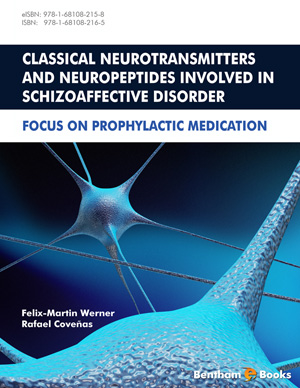Abstract
The schizoaffective disorder is a heritable disease and some susceptibility genes have been discovered. Risk genes that may encode psychotic symptoms are for example, dysbindin-1 and neuregulin-1 which encode glutamate hypoactivity, catechol- O-methyl transferase and monoamine oxidase A/B which encode dopamine hyperactivity through a decreased dopamine breakdown, and GAD 67 which encodes GABA hypoactivity. The PACAP gene is as well a risk gene for psychotic symptoms. Animals lacking the PACAP gene show behavioral abnormalities which can be ameliorated after administration of 5-HT2A antagonists. The proline hydroxylase is also a risk gene for psychotic symptoms. One haplotype of this gene causes deficits in prepulse inhibition. Rare risk genes for psychotic symptoms may cause a psychosis which begins in the early adolescence and may be treatment-resistant. Environmentgene interactions and epigenetic mechanisms can concern dopaminergic, serotonergic, GABAergic and glutaminergic neurons. Depressive symptoms may be due to alterations of the serotonin and noradrenaline transporter genes. Manic symptoms can be encoded by the genes monoamine oxidase A/B and catechol-O-methyl transferase.
Keywords: Catechol-O-methyl transferase, dysbindin-1, epigenetic mechanism, glutamic acid decarboxylase 67, monoamine oxidase A/B, neuregulin-1, noradrenaline transporter gene, pituitary-adenylate cyclase activating polypeptide, proline hydroxylase, rare genes, serotonin transporter gene, susceptibility gene, treatment-resistant schizoaffective disorder.






















